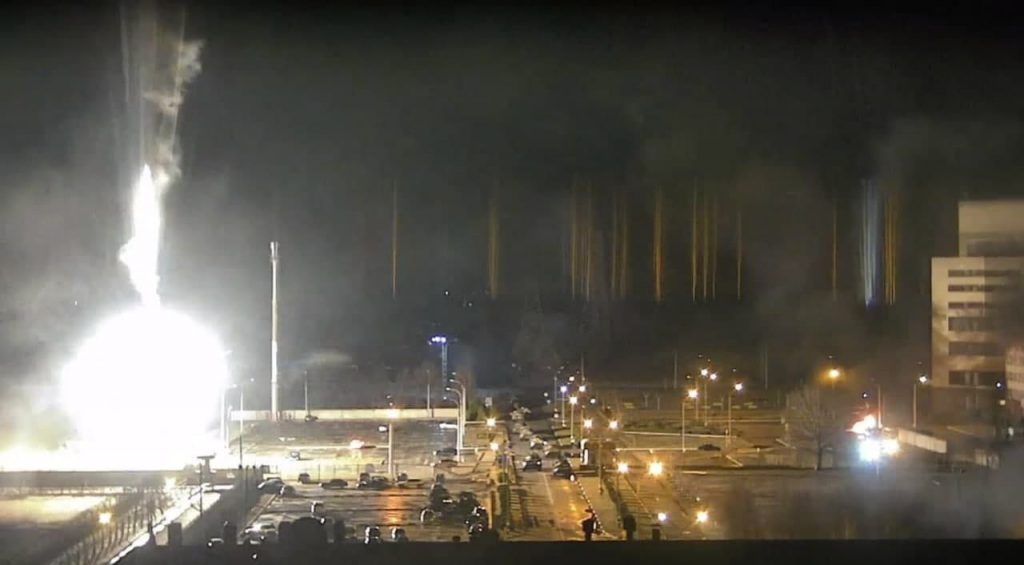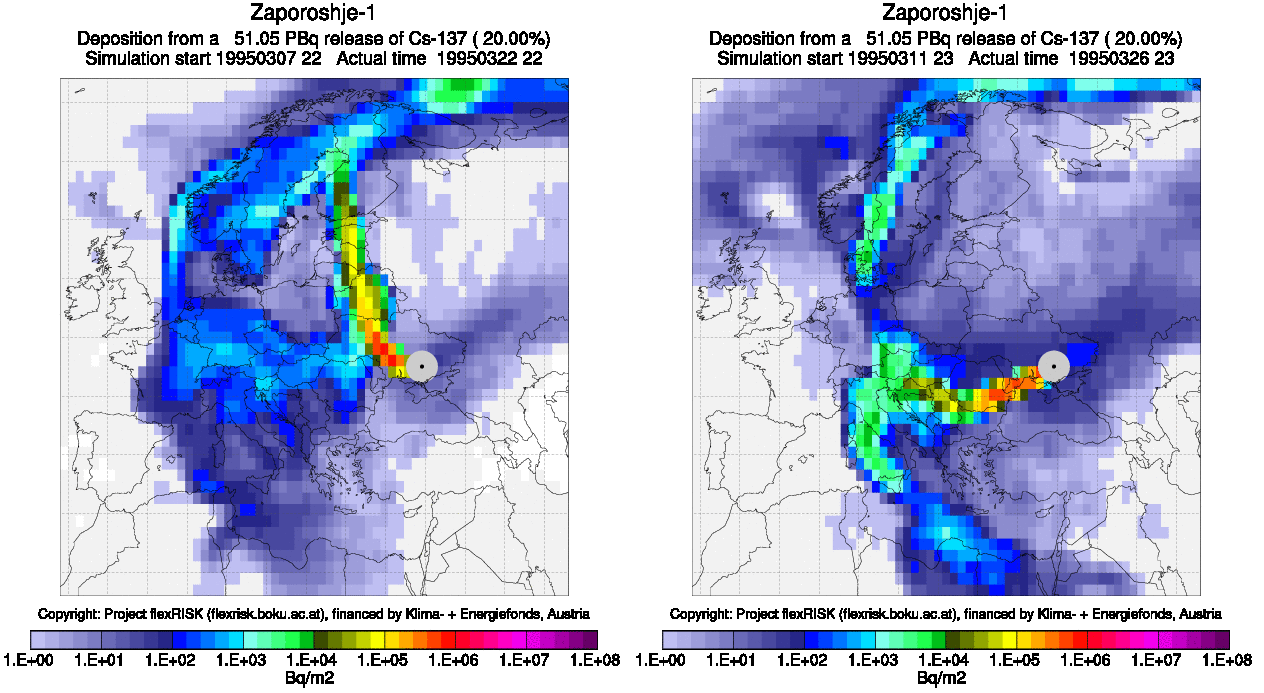The https://english.atlatszo.hu use cookies to track and profile customers such as action tags and pixel tracking on our website to assist our marketing. On our website we use technical, analytical, marketing and preference cookies. These are necessary for our site to work properly and to give us inforamation about how our site is used. See Cookies Policy
A breach at a Ukrainian NPP could cause radiological contamination in Hungary
Ukraine’s largest nuclear power plant, Zaporizhzhia, ca. 1000 kilometres from the Hungarian border, was taken over by Russian military forces on 4 March. It might seem a far away place, but is it really? Could a potential severe accident in the nuclear power plant and the subsequent increase of radioactivity affect Hungary?
The Nuclear Regulatory Authority of Ukraine shared the results of an air distribution model on 4 March, showing the impact of a hypothetical, severe nuclear accident happening on that day at the Zaporizhzhia Nuclear Power Plant. We can see on the map below that the radioactive cloud would have moved towards East from Zaporizhzhya in the following 9 hours after the accident, according to weather forecast data. Thus, a nuclear accident on March 4, 2022 in Zaporizhzhya would not have affected Hungary in terms of radioactivity.

How about another day, though? It depends on the weather conditions, primarily wind and also rain.
This publicly available model shows the radioactive contamination (precisely: the ground deposition of caesium-137 isotope) in case of a Chernobyl-like (INES-scale 7) accident in various European nuclear power plants, under typical weather conditions. The model is built on meteorological data of one specific year: 1995, simulating ca. 2800 various weather events. As the model uses data from the past, it is certainly not suitable for forecasting current events (only if we compared current meteorological conditions with those of 1995, and chose a day where weather was very similar for a 2-week period in both years ).
So, the graphs below merely illustrate the fact that a radioactive contamination of Hungary can be a real possibility in case of a serious radioactive leakage in Zaporizhzhia. Let’s take a couple of March days from 1995 for an example:
If a severe accident happened in the Zaporizhzhia Nuclear Power Plant on a day like March 7 or 11 was in 1995, then the radioactive contamination would be distributed above Hungary and whole Western Europe. On a day like March 16 or 20, 1995, however, the radioactive cloud would avoid Hungary. (Red indicates higher levels of radioactive contamination on the map.)
The maps above show the ground deposition of caesium-137 isotope that is caused by radioactivity distributed in the air and then falling to the ground by rain. Caesium-137 has a half-life of 30 years, thus, it remains in the ground for decades. Cesium-137 is a radioactive isotope produced by the nuclear fission of uranium and plutonium. This is one of the most problematic of the radioactive isotopes because it spreads extremely fast, so once it enters the environment, it is very difficult to handle. Therefore, it is one of the most important indicators of nuclear accidents. Like all radioactive substances, cesium-137 can cause cancer and death, depending on the dose. Cesium-137 has only been present in the environment since the use of nuclear power plants and nuclear weapons, i.e. did not occur in significant amounts on Earth in the 1.7 billion years before that.
It is important to highlight that the model presented above examines the impact of very serious, Chernobyl-level accidents (INES-scale 7). It is also important to note that only 1 reactor can be set in the model at a time, meaning that if several reactors in the Zaporizhzhia nuclear power plant would be damaged at the same time, the effect of this could not be shown by this model. (The Zaporizhia Nuclear Power Plant has six reactors.) Certainly, this does not affect the direction of the distribution, but it does affect the level of radioactivity i.e. the metrics and colors indicated in the maps above.
Zaporizhzhia is not far away. And other nuclear power plants in Ukraine are not even this far away: the Khmelnitskiy Nuclear Power Plant is only 500 kilometres from the Hungarian border. Anyone can look at the radioactive distribution models for Khmelnitskiy as well. Ukraine is close. In case of a war, nuclear power plants can pose a significant safety risk.
Nuclear reactor units abandoned 30 years ago after Chernobyl to be finished in Ukraine
In the recent weeks, the whole world re-lived one of history’s most severe nuclear catastrophes (Ukraine, 1986), thanks to the…
Written and translated by Orsolya Fülöp. The Hungarian version of this story is available here.
Hungary. What do you know about Hungary? from atlatszo.hu on Vimeo.


